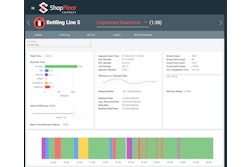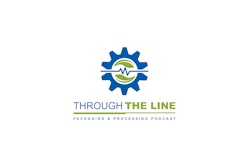You probably wouldn’t wake up one day and decide to compete in a marathon. It takes planning, training, preparation, and commitment. Automating your plant is no different.
For example, consider the technology in the car you drive. It generally works the first time, every time, and meets your expectations.
Why can’t it be that way in the plant? Fundamentally, your car has been designed and assembled as one complete package. Your plant and workforce have evolved over the years. Chances are, you have an interesting blend of legacy equipment with new lines and changing workforce demographics.
You may think you’re stuck, but the truth is you need to discover where you are on your automation journey and design plans that help you get to where you need be.
Most automation projects fail because, too frequently, basic questions like these aren’t addressed:
- Where do I start?
- Are my people ready?
- How will it pay for itself?
- What is critical to my business?
To help bring some clarity to this complex problem of launching (or relaunching) your automation journey, FSO Institute asked John Giles, former engineering manager for Amway, to share his insights on the automation roadmap.
His responsibilities at Amway included developing and leading the company’s automation teams in robotics and line modernizations, while engaging with plant personnel at all level of the company.
FSO Institute: What is a brief explanation of the automation roadmap?
Giles: The automation roadmap defines key steps to help define the process of developing an automation strategy. The roadmap uses the toll gate process (an effective project management tool), where each toll gate is a review or decision point that provides for communication, oversight, and a formal decision-making process on how to proceed.
The first step, discovery, is all about using your specific manufacturing data, along with surveys to help identify where to start. Once the path is identified, the second step, the feasibility assessment, digs more deeply into specific deliverables and a rough order of magnitude costs and justification, and sets guidelines for the potential project. The next step, strategy development, dives more deeply into project specifics, with the goal to deliver a project scope, capital requirements, and financial justification. The fourth step is proof of concept, which is the automation project execution phase and is typically the longest phase due to equipment and startup timing. The last step is to evaluate and replicate, which essentially applies lessons learned to roll out additional automation projects.
FSO Institute: Many automation projects fail to meet stakeholder expectations. According to many experts, companies are drawn to the excitement of that shiny, new object and overlook those crucial problems that need resolution. Can you provide more insight into the value of the discovery phase?
Giles: The discovery step is crucial, as it helps narrow down the right automation strategy for your situation and focuses attention on a specific project that will yield results where most needed. Every automation application is different, and this step allows the team to gather important information and to get everyone on board with the overall direction. By using production data, forecasts, corporate strategy, and survey data, this step helps create the approach that makes the most sense and will yield the most benefit.
Another key step during the discovery phase is identifying and evaluating resources at all levels to ensure they’re available. Internally, this includes manufacturing, engineering, maintenance, safety, quality, purchasing, and yes, human resources. Externally, this would include integrators, programmers, suppliers, fabricators, machining, etc. Competent individuals and companies are a requirement for automation success, and in our experience, these resources are typically underestimated at the beginning of the project.
FSO Institute: What will the feasibility assessment phase provide the company?
Giles: The feasibility assessment is typically the most creative portion of the roadmap and is one of the best times to look at different methods of applying automation to the specific area in need. An example would be to address the specific bottleneck areas on a packaging line, whether they’re due to equipment problems, manpower, or potentially safety concerns. Casepacking and palletizing are typically common areas, as they tend to cover all three of these bottleneck areas.
Many solutions can be investigated during this phase, followed by some key decisions to narrow down the best approach, so the team isn’t spending valuable time on solutions that may not be viable. The challenge here is not to get too detailed during the feasibility assessment. The goal is to deliver a framework for a business plan, with ballpark project costs and a schedule, to help decide whether the project should proceed to the next step. A competent project lead is important to keep the team functioning at the correct level and leaving the specific details to be defined during the strategy development step.
For these reasons, a project charter is viewed as a key deliverable at this step in the process, particularly as it defines both what is included and excluded in the overall project. This is important at this stage, as it creates a formal agreement and method of communicating exactly what the overall objective is and what will be delivered in the overall project.
I remember a comment Greg Flickinger, senior vice president operations and supply chain of Green Thumb Industries, noted in a previous article: “To make a meaningful impact on the organization’s performance, our teams must also have the resources to take action. The resources of today are centered in technology—technology in the form of tools, data, and analytics. Technology is the great enabler, accelerating results and cementing sustainment, when [it is] placed on a solid foundation of empowered and skilled teams.”
The best way to get started is to plan thoroughly in the discovery and feasibility assessment phases. To train smartly for your success, select a meaningful and manageable project that will build confidence and establish an early win, leading to an eventual track record of wins. This is important for the people involved and, more importantly, in setting and engaging your culture for automation success. As you build competency through these wins, you’ll find that those larger and more complex automation projects will become very achievable. It’s the straightforward concept of learning to walk before you run, and don’t forget to prepare for the unexpected.





















